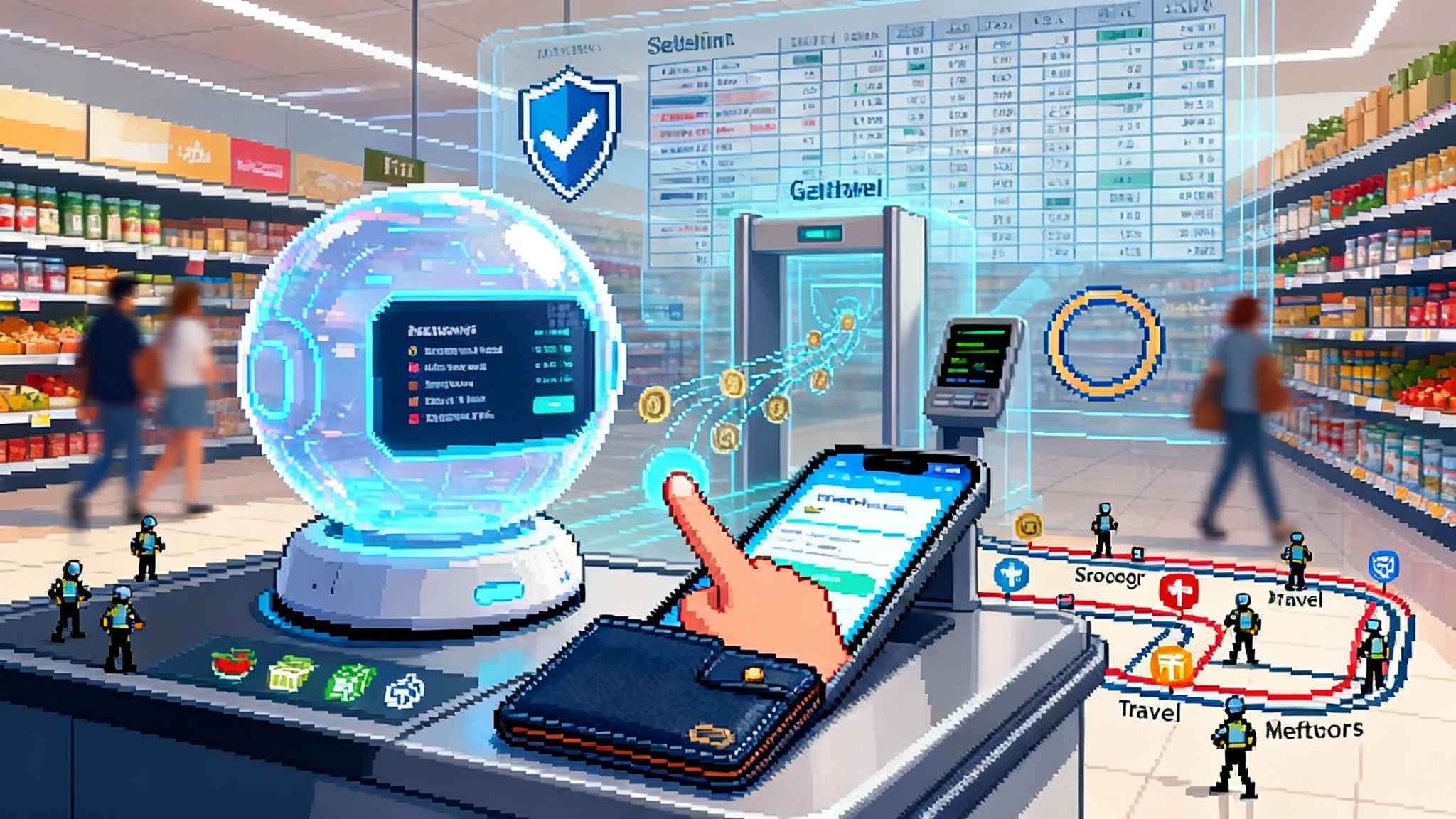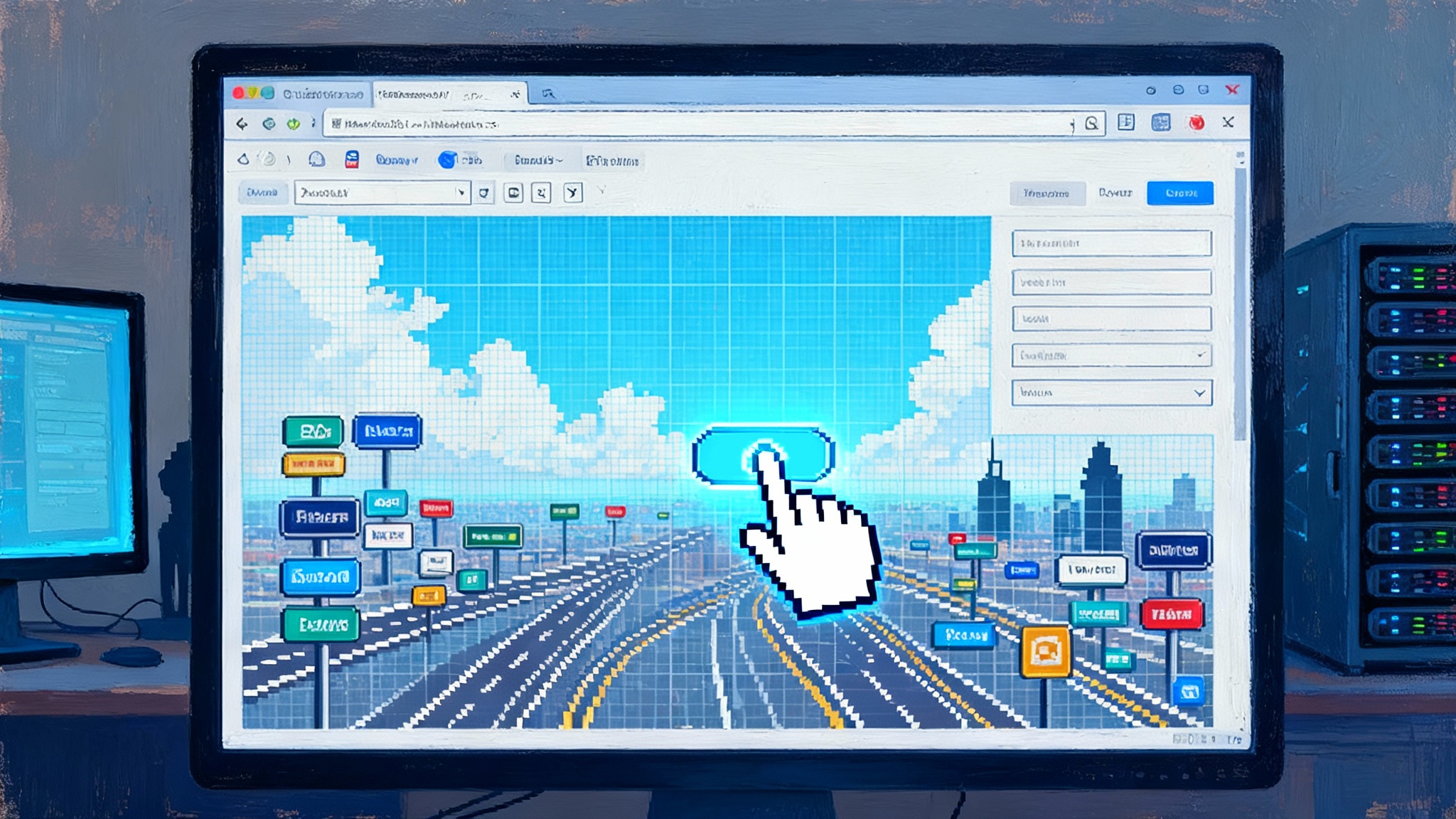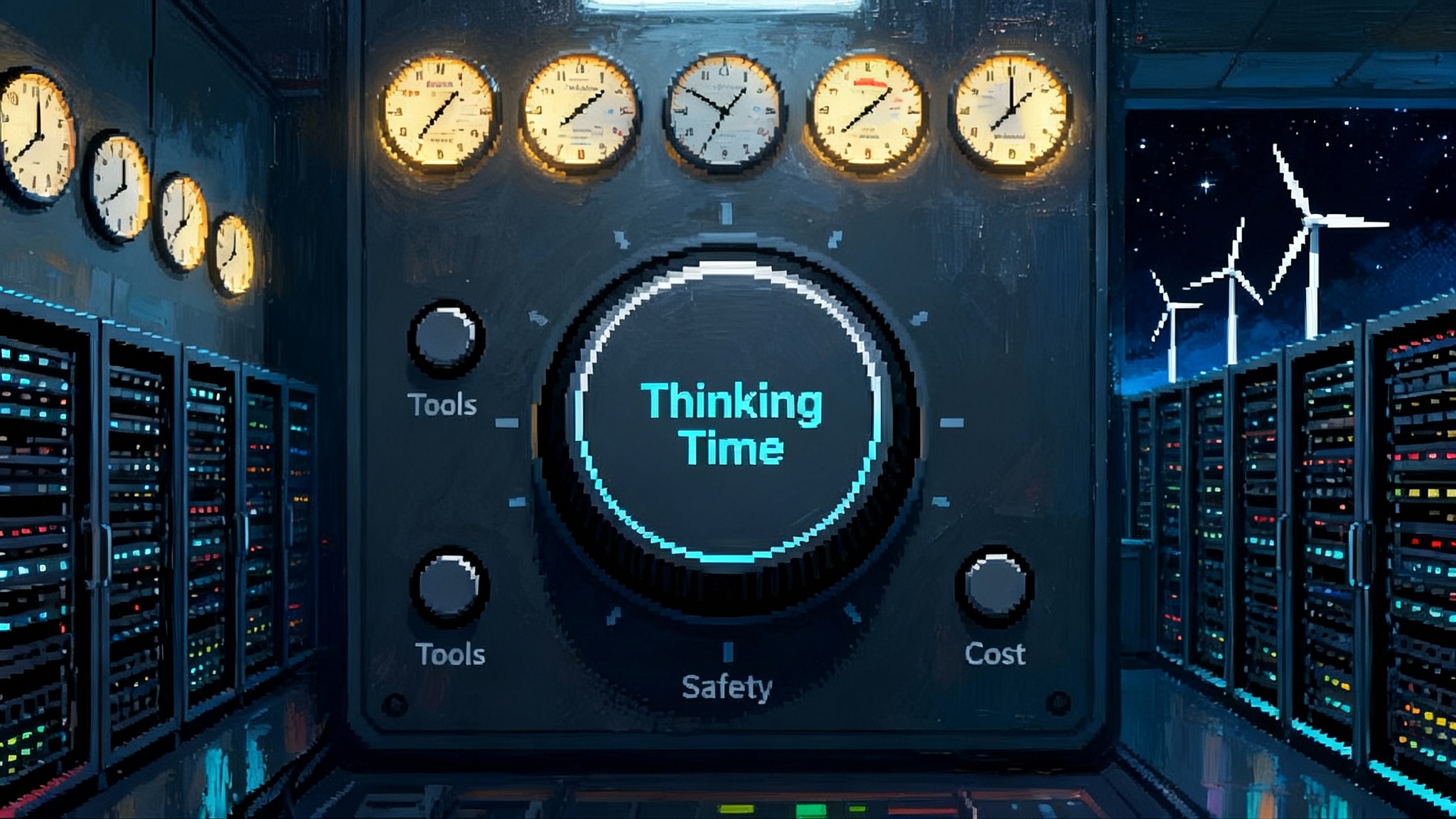When AI Gets a Body: The Home Becomes Programmable
Humanoid robots just jumped from demos to real preorders. This piece shows how teleoperation, consentful autonomy, and chore APIs could make houses programmable and turn everyday labor into compounding gains.

The week robots knocked on the front door
On October 28, 2025, 1X opened consumer preorders for NEO, a home humanoid pitched as an everyday helper rather than a lab demo. The checkout flow and pricing are public, a break from robotics as perpetual teaser. You can read the product language and training model details on the NEO home robot page. Nineteen days earlier, on October 9, Figure AI unveiled its third platform, Figure 03, a fabric-clad humanoid designed for domestic spaces rather than factory aisles. The company positions this generation as a step toward mass-producible household robots. See the company’s overview on the Figure 03 page.
Two announcements in one month do not prove a market. They do crystallize an inflection: frontier artificial intelligence is leaving screens and entering rooms with stairs, rugs, pets, and cereal bowls. The next S curve will not be about a larger context window. It will be about turning the home into a programmable environment where software, data, and careful design norms tame the chaos of daily life.
From pixels to places
We have spent a decade training models that ingest pixels, tokens, and audio, then predict the next pixel, token, or phoneme. Homes add friction. A dishwasher rack is not a sequence. It is a tight lattice that expects bowls at an angle and forks tines down. A laundry pile is deformable. A floor is slippery when wet. In homes, success is measured in safe contact, not just accurate prediction.
That is why the domestic frontier is defined less by model size and more by the feedback loops that connect teleoperation, autonomy, and user supervision to the physical world. We will still care about transformer width. We will care more about whether a robot can move a heavy stockpot without exceeding a force threshold near a toddler’s foot.
This shift also puts interfaces at center stage. Teleoperation that feels obvious and low friction is not an add on but the primary driver of early reliability. For a deeper cut on why interaction layers compound capability, see how interfaces as infrastructure shape agent performance beyond raw model scale.
Teleoperation today, autonomy tomorrow
If you read between the lines of the current launches, a pattern emerges. Early owners will live in a hybrid state where robots handle simple routines alone and call for help when stuck. 1X’s language describes an Expert Mode where remote specialists supervise or guide tasks while the system learns. Peeking at industry demos elsewhere, you see fleets collect egocentric video, operator actions, and success or failure labels.
Think about it as driver education for robots. The remote operator is the instructor in the passenger seat. The car can already steer in the lane on a highway. The instructor grabs the wheel in a construction zone, then hands it back. Over time, the car needs intervention less often because thousands of instructors and cars are teaching the same policy.
The important question is not whether this loop works in principle. It already does in logistics and controlled facility pilots. The question is how to run the loop in homes with consent, privacy, and trust. That requires product choices that make people first class participants in the learning process.
Consentful autonomy
Consentful autonomy means the household governs how the robot learns and when a human co pilot can step in. It treats remote experts as invited guests, not invisible observers. In practical terms, design for consentful autonomy should include:
- A physical indicator light and an unmistakable chime whenever a remote human is live. The indicator must be hard wired to camera and microphone activation, not just software state.
- A one tap pause and a one button privacy shutter that physically occludes sensors. The pause should be possible by voice and by a large, well marked button on the robot.
- Room level no go zones that are easy to draw in the app and easy to toggle in the moment. A teenager who wants privacy should not need to negotiate with a parent to redraw the map.
- An activity log that lists what was done, by whom, and why. Remote co pilot sessions should be recorded and stored locally by default, with an on device checksum so households can confirm later that nothing was altered.
- Granular consent for data sharing. Households can opt into a skills commons where normalized traces help robots learn tasks like folding towels or loading dishwashers. The default should be local only storage with explicit prompts when a clip is about to leave the home network.
Consentful autonomy is not a slogan. It is a set of user interface choices, hardware interlocks, and data governance defaults. The best versions align with memory as product strategy, so retention, redaction, and recall windows are part of setup rather than fine print.
Chore APIs: making the home programmable
A home is full of repeatable intents wrapped in messy variation. Turning homes into programmable environments means exposing those intents as stable interfaces. A chore application programming interface is not a smartphone launcher. It is a library of task schemas and safety constraints that any model or teleoperator can call.
Consider a few examples.
- Laundry API. Functions: sort_by_label, wash_cycle(cold_delicate), dry_cycle(low_heat), fold_garment(type=tshirt), stow(location=closet.left). Constraints: do_not_operate_if(tripped_GFCI), touch_temperature_limit(45°C), no_interaction_with(bleach_caps).
- Kitchen API. Functions: clear_table, load_dishwasher(rack_map), wipe_surface(approved_cleaner). Constraints: no_blades, no_open_flame, water_spill_cleanup_before_navigation.
- Entryway API. Functions: fetch_parcel, sanitize_package, place_in_bin. Constraints: do_not_exit_home, verify_door_closed_post_task.
Why encode tasks this way? Because it lets households and device makers bind real objects to known endpoints. A dishwasher brand could ship a digital rack map that robots subscribe to. A cabinet could advertise a hinge stiffness budget and a close speed profile. Chore APIs reduce ambiguity, speed up teleoperation, and make autonomy generalize across homes. Vendors can compete on clever implementations while honoring the same safety and capability contracts.
Chore APIs also create a natural path for third party tools. A label maker that prints QR codes with semantics. A pantry camera that exports a shelf map. A dishwasher that publishes a 3D rack schema. The more a home can declare its capabilities, the less a robot must infer under pressure.
Spatial safety budgets, not just safety features
A spec sheet can list soft materials and tendon drives. That is necessary but not sufficient. The domestic bar is less about a single shock absorber and more about a system that budgets risk in space and time.
A spatial safety budget has three layers:
- Baseline limits. Define force, torque, and speed ceilings for zones near people or pets. A living room might cap arm speed and hand grip force. A pantry with heavier items can allow more power.
- Context gates. Raise or lower those ceilings based on context. If the microphone hears a kettle boiling or the thermal camera sees a hot pan, the robot enters caution mode in the kitchen and prefers slow, wide paths.
- Predictive reserves. Hold back a margin for the unexpected. If a toddler darts into a corridor, the robot still has enough braking distance and torque headroom to stop and hold a load safely.
You can see early hints of this thinking in product pages that tout soft bodies, no pinch points, and head impact thresholds. The point is to elevate these from bullet points to budgets that developers target, households configure, and the robot continuously audits.
The new household labor math
Let us run numbers the way a pragmatic head of household would. Suppose a robot costs twenty thousand dollars to buy or five hundred dollars per month to lease. A typical American household spends between two and three hours a day on chores when you add cooking, cleaning, laundry, and pickup. At a blended thirty dollars per hour for outsourced help in a major city, two hours per day is about eighteen hundred dollars per month. Outside large cities, rates fall, but availability of on demand help falls too.
The first version of domestic humanoids will not replace skilled cleaners or cooks. They will chip away at the repetitive substrate that makes those services necessary so often. If a robot reliably resets rooms, tracks groceries, runs laundry end to end, and keeps a kitchen sanitary, then deep cleaning and special meal prep can be scheduled less often. The time value comes not only from fewer hours spent on chores but from avoiding decision fatigue and task switching. That is why the subscription model could make sense for many homes even if autonomy is partial at first. The predictability is the product.
The flip side is opportunity cost. Early robots will require supervision, setup, and ongoing tuning. Families will pay with attention before they pay with money. That is why chore APIs and consentful autonomy are not nice to haves. They are the levers that make early deployments net positive.
Design norms will decide the slope of the S curve
Regulation will lag. It should focus on red lines, certification, and remedies. But the day to day success of domestic robots will be determined by what designers and engineers choose to make default.
Four norms to lock in now:
- Local first control. Keep core perception, short horizon planning, and safety loops on device, with no dependency on wide area networks for basic operation. Cloud can enhance skills and search memories, but the robot must remain useful and safe during an internet outage. This choice aligns with edge first device ethics.
- Opt in data commons for skills. Incentivize households to share normalized traces of routine chores. Create a standard schema and rewards that can be pooled across manufacturers. The commons should exclude bedrooms and bathrooms by policy, and should redact faces and screens on device before upload.
- Auditability of in home models. Treat robots like aircraft with black box recorders. Every action should be replayable from a rolling buffer with synchronized sensor data and control states. Third party auditors and insurers should be able to verify that safety budgets were respected.
- Constrained domains and staged unlocks. Start with no blade, no fire, no ladder domains. Require end to end tests to unlock advanced capabilities, with a household visible report that names residual risks and mitigations.
These norms are actionable today and will do more for real safety and progress than another white paper about abstract risk.
What builders should do next
- Ship skill templates with guardrails. Include task schemas households can customize. Spell out limits in plain language and visual maps.
- Build a privacy preserving teleop stack. Make co pilot sessions explicit, short, and instrumented. Train on device whenever possible and batch uploads through a household review queue.
- Publish safety budgets, not just specs. Document speed, force, and energy ceilings by context. Show how the robot enforces them, with examples of graceful failure.
- Embrace messy user feedback. Provide a simple phone camera capture mode so users can record the corner cases that stump the robot. Ingest those clips as unit tests for future releases.
- Make repair and service human. Design hands, covers, and sensors for quick replacement. Bring the cost and turnaround for field repairs as close to appliance service as possible.
What households should do next
- Start with a room. Pick a low risk domain like laundry or pantry restocking. Instrument it with cheap labels, shelf maps, and predictable containers. Give the robot a clear win.
- Set consent rules early. Decide which rooms are off limits, who can authorize co pilot sessions, and how recordings are stored. Practice the pause button.
- Measure outcomes. Track chores per week completed end to end without intervention. Track time spent supervising. If the curve bends down after a month, keep going. If it does not, change the setup.
What investors and policymakers should do next
- Fund the unsexy layers. Tooling for audit logs, privacy preserving video redaction, and home safe actuation does not trend on social media. It determines whether these systems compound or stall.
- Tie incentives to skill commons contributions. Offer meaningful discounts or service credits when households share useful, safe training traces through the standard schema.
- Aim regulation at claims, not configurations. Require that companies substantiate autonomy levels, safety budgets, and repairability in standardized language, then enforce misrepresentation.
Identity, accountability, and trust loops
As robots act in homes, identity and accountability become part of daily operations. Who approved a capability unlock, which operator intervened, and which model version executed a task should be provable facts, not vibes. The accountability stack will rhyme with the emerging agent identity layer on the broader internet. If you want a primer on this, see how an identity layer for agents reduces ambiguity and makes trust programmable.
Why October 2025 matters
The specificity of this month is the point. A preorder page and a named home platform tell the market to stop guessing and start testing. The next few quarters will not be decided by a viral video. They will be decided by whether robots can repeat chores across different homes without a support engineer on speed dial.
The core bet behind humanoids in the home is straightforward. If homes become programmable, then labor compounds. Every operator correction, every annotated failure, and every chore schema becomes a reusable building block. The value climbs even if the robot moves slowly, so long as it moves consistently and safely. The risk is equally clear. A single privacy breach during a co pilot session or a single safety failure that violates the budget in a home with children will chill adoption for years.
The closing image
Imagine two dashboards in your hallway closet. The first lists the week’s chores as function calls. The second shows a safety budget with green bars and thresholds. You can see which tasks ran locally, which tapped the skills commons, and which needed a human co pilot. There is nothing magical in either dashboard. What matters is the loop that connects them to the robot in your kitchen.
This is the domestic frontier. Bodies that learn. Homes that compile. Progress that comes not from bigger context windows, but from making our spaces legible and safe to machines that can finally reach the shelves. The sooner we treat our living rooms like programmable environments, the sooner embodied artificial intelligence will compound where it counts: in the everyday.








